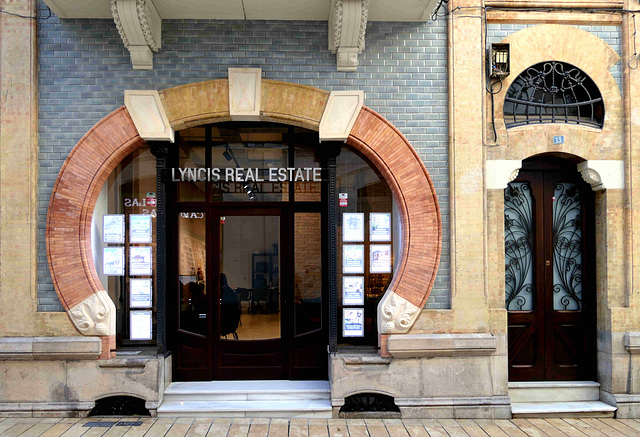Huelva - Museo de Huelva
Huelva - Museo de Huelva
Huelva - Museo de Huelva
Huelva - Museo de Huelva
Huelva - Museo de Huelva
Huelva - Museo de Huelva
Huelva - Nuestra Señora de la Concepción
Huelva - Los Angeles
Huelva
Ponte Internacional do Guadiana
Dolmen de Soto
Dolmen de Soto
Dolmen de Soto
Dolmen de Soto
Dólmenes de El Pozuelo
Dólmenes de El Pozuelo
Dólmenes de El Pozuelo
Dólmenes de El Pozuelo
Dólmenes de El Pozuelo
Dólmenes de El Pozuelo
Huelva
Huelva - wasdog
Minas de Riotinto - Bella Vista
Minas de Riotinto - Bella Vista
Minas de Riotinto - Bella Vista
Minas de Riotinto - Bella Vista
Minas de Riotinto
Minas de Riotinto
Minas de Riotinto - Museo Minero
Jerez de los Caballeros - Restaurante Oasis
Jerez de los Caballeros - Restaurante Oasis
Santa Olalla del Cala - Cinema Bravo
Sevilla
Sevilla - Torre del Oro
Sevilla - Plaza del Cabildo
Sevilla - Confitería La Campana
Sevilla - Museo De Bellas Artes
Sevilla - Museo De Bellas Artes
Sevilla - Museo De Bellas Artes
Sevilla - Museo De Bellas Artes
Sevilla - Museo De Bellas Artes
Sevilla - Museo De Bellas Artes
Sevilla - Museo De Bellas Artes
Sevilla - Museo De Bellas Artes
Sevilla - Museo De Bellas Artes
Sevilla - Museo De Bellas Artes
Sevilla - Museo De Bellas Artes
Sevilla - Museo De Bellas Artes
Sevilla - Museo De Bellas Artes
Sevilla
Sevilla - Catedral de Santa María de la Sede
Écija - Los Molinos
Écija - Los Molinos
Écija
Écija - Museo Histórico
Écija - Museo Histórico",
Écija - Museo Histórico"
Écija - Museo Histórico
Écija - Museo Histórico
Écija - Museo Histórico
Écija - Museo Histórico
Écija - Museo Histórico
Écija - Museo Histórico
Necrópolis de Sierra Martilla
Necrópolis de Sierra Martilla
Necrópolis de Sierra Martilla
Loja - Santa Teresa
Loja
Antequera - Tholos de El Romeral
Antequera - Tholos de El Romeral
Antequera - Dolmen de Menga
Antequera - Dolmen de Menga
Antequera - Dolmen de Menga
Antequera - Dolmen de Viera
Antequera - Dolmens Site
Antequera - Dolmens Site
Lucena - Scooter
Lucena - Reiki y Tarot Estrella
Lucena - Iglesia de San Mateo
Lucena - Iglesia de San Mateo
Lucena - Iglesia de San Mateo
Lucena - Iglesia de San Mateo
Location
Lat, Lng:
Lat, Lng:
You can copy the above to your favourite mapping app.
Address: unknown
Lat, Lng:
You can copy the above to your favourite mapping app.
Address: unknown
See also...
Keywords
Authorizations, license
-
Visible by: Everyone -
All rights reserved
-
16 visits
Huelva


It is believed that trade contacts with the Phoenicians existed from the late 10th century, and it is even assumed that Tartessos was located at this site. In addition to objects made of silver, copper, iron, ivory and stone, many thousands of fragments of clay vessels were found during excavations from around 900 to 770 B.C. in 1998. Huelva was probably an early Phoenician emporium and it was flourishing under the Carthaginians and Romans, who began to mine ore deposits. Under the Visigoths and Arabs, from whom the city was reconquered by Alfonso X the Wise in 1257, the city came to a standstill.
In 1880 it still only had 13,000 inhabitants, then it grew fast. It owes its boom to the mineral deposits on the Rio Tinto (Minas de Riotinto), as from the last quarter of the 19th century, the town became a small British colony. The reason for this was the permission granted by the Spanish government in 1873 for the mines of Riotinto to be commercially developed and utilised by the Rio Tinto Company Limited. As a result, the town and its infrastructure began to grow and the sleepy little village became a modern industrial town of the 19th century and an elegant town in the first centuries of the 20th-
The British also brought football to Spain, which led to the founding of the first football club in Spain - Recreativo Huelva - in 1889.
In 1880 it still only had 13,000 inhabitants, then it grew fast. It owes its boom to the mineral deposits on the Rio Tinto (Minas de Riotinto), as from the last quarter of the 19th century, the town became a small British colony. The reason for this was the permission granted by the Spanish government in 1873 for the mines of Riotinto to be commercially developed and utilised by the Rio Tinto Company Limited. As a result, the town and its infrastructure began to grow and the sleepy little village became a modern industrial town of the 19th century and an elegant town in the first centuries of the 20th-
The British also brought football to Spain, which led to the founding of the first football club in Spain - Recreativo Huelva - in 1889.
Andrei Orekhov, Alexander Prolygin have particularly liked this photo
- Keyboard shortcuts:
Jump to top
RSS feed- Latest comments - Subscribe to the comment feeds of this photo
- ipernity © 2007-2024
- Help & Contact
|
Club news
|
About ipernity
|
History |
ipernity Club & Prices |
Guide of good conduct
Donate | Group guidelines | Privacy policy | Terms of use | Statutes | In memoria -
Facebook
Twitter

Sign-in to write a comment.